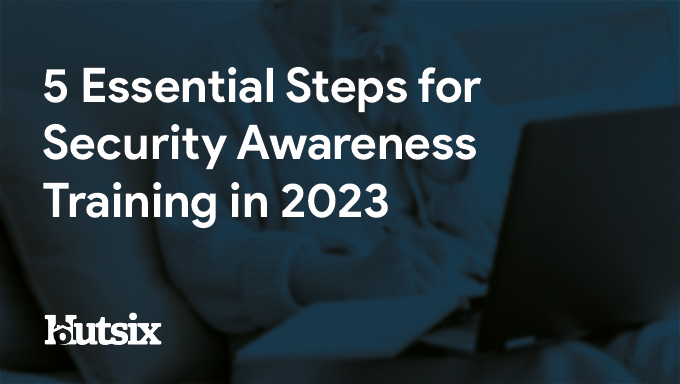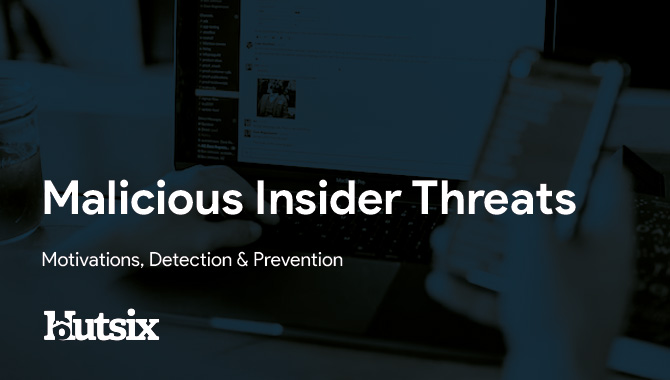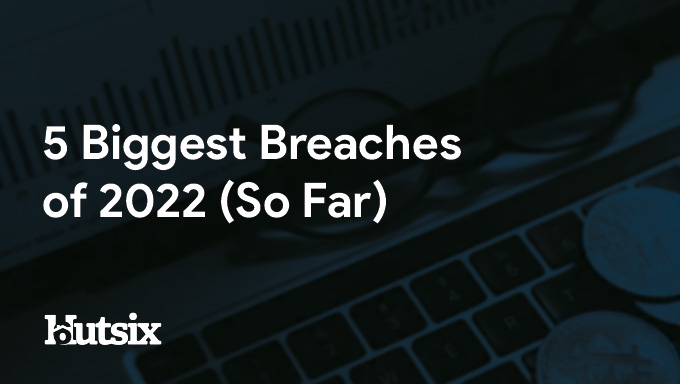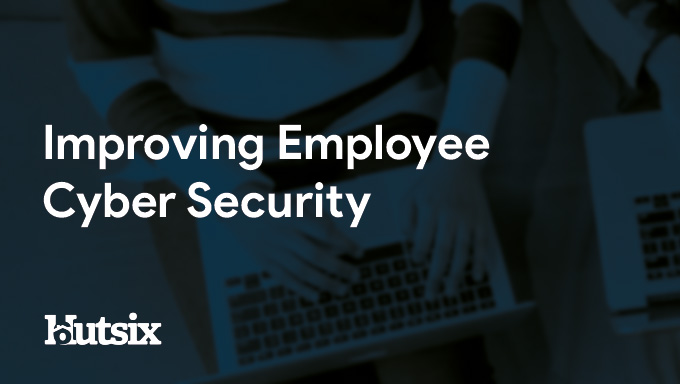How Much Does Security Awareness Training Cost?
In 2023, the average cost of a data breach reached a staggering $4.45 million, marking a 15% increase over three years. This alarming trend transcends industry sectors, company sizes, and geographical locations.
Regardless of your organisation's profile, investing in information security awareness training is a crucial step towards mitigating this growing risk.
Looking for cost effective security training?
Talk to one of our experts about value-focused employee training now.
What Is the Cost of a Cybersecurity Attack to a Business?
A cybersecurity attack is a multifaceted crisis that inflicts a cascade of consequences on businesses. Let's explore the profound implications of a cyberattack:
1. Direct Financial Costs:
- Loss of Sensitive Data: Cyberattacks compromise sensitive data, including customer information, financial records, intellectual property, and trade secrets. The financial yimpact includes the cost of data recovery and potential financial losses due to misuse.
- Regulatory Fines: Stringent data privacy regulations lead to substantial fines for non-compliance. Regulatory bodies can impose hefty penalties, such as GDPR's authority to fine companies a percentage of their global annual turnover.
- Legal Fees: Handling a cybersecurity breach often involves expensive legal battles. Businesses may need legal counsel to navigate complex regulations, handle potential lawsuits, and seek damages from perpetrators.
- Compensation to Affected Parties: Legal obligations may require compensation to affected parties, covering costs like credit monitoring and identity theft restoration services.
2. Indirect Costs:
- Damage to Reputation: Cyberattacks severely damage a company's reputation. Trust among customers, partners, and stakeholders is shattered, making it challenging to regain public trust.
- Decreased Productivity: Employees shift focus from core tasks to address the breach and its consequences. This diverts resources, causing decreased productivity as staff must resolve the security incident.
- Extensive Time and Effort for Recovery: Recovering from a cybersecurity attack is a time-consuming process, involving the identification and mitigation of vulnerabilities, rebuilding compromised systems, and implementing enhanced security measures. This disrupts business operations and productivity.
What Are the Risks of Not Having Security Awareness Training?
Not investing in security awareness training is akin to leaving your organisation's doors wide open to cybercriminals.
Employees who are not well-versed in security protocols can inadvertently fall prey to phishing attacks, share sensitive information, or neglect to follow secure password practices. Such lapses in security can lead to data breaches, financial losses, and damage to the company's reputation.
How Much Does a Security Awareness Program Cost?
First and foremost, it's worth noting that the cost of a security awareness program will vary depending on specific needs, including the type of training your looking for, the number of employees, and the general extent of your training program.
Furthermore, the cost of a security awareness program will also depend on your training supplier. Here at Hut Six, our starter option for online employee training begins at just £6 (around $7.4) per user per year.
Use our Pricing Calculator now to choose the right plan for you.
When weighed against the financial and reputational perils a cyber incident can bring, this cost emerges as a remarkably affordable and prudent measure to safeguard your business.
Case Study: The Target Data Breach
In a recent case, Target, a major US retailer, experienced a significant data breach that compromised the payment data of approximately 40 million customers. Target faced substantial regulatory fines and legal fees, making it a costly ordeal.
Beyond the direct financial consequences, the breach damaged Target's reputation, leading to decreased revenue and long-term customer attrition. The company had to redirect resources to address the breach, affecting employee productivity, and the recovery process was resource-intensive and time-consuming.
This case underscores the critical need for robust security measures and employee awareness, emphasising the importance of security awareness training to mitigate such devastating incidents.
What Are the Benefits of Security Awareness Training?
Security awareness training equips your workforce with the knowledge and skills to identify and respond to security threats effectively. Some benefits include:
- Reduced Risk: Trained employees are less likely to fall victim to cyber threats, significantly lowering the risk of data breaches.
- Protecting Reputation: Preventing breaches safeguards your organisation's reputation and trustworthiness.
- Compliance: Security training helps meet regulatory requirements and avoid potential fines.
- Cost Savings: Prevention is far cheaper than dealing with the aftermath of a cyberattack.
- Increased Productivity: With fewer security incidents to deal with, your team can focus on core tasks, boosting overall productivity.
Click here to learn more about the impact and benefits of awareness training.
Types of Security Awareness Training
Security awareness training comes in various forms, including online courses, in-person workshops, and simulated exercises.
1. Online Courses:
- Flexibility and Scalability: Online courses provide a flexible and scalable approach to security awareness training. Employees can access the materials at their own pace and from anywhere with an internet connection. This is especially beneficial for organisations with remote or distributed teams.
2. In-Person Workshops:
- Interactive Learning: While less scalable, in-person workshops can offer an interactive experience. Allowing for hands-on activities, real-time discussions, and direct feedback, in-person workshops can be great at supplementing and building upon primary training.
3. Simulated Exercises:
- Practical Experience: Simulated exercises, such as mock phishing campaigns, provide employees with real-world scenarios to test their knowledge and response. These exercises help employees develop practical skills in identifying and mitigating security threats.
- Behavioural Change: Simulations can lead to behavioural change, as employees experience the consequences of their actions in a controlled environment. This hands-on approach is particularly effective in reinforcing security awareness.
ROI of Security Awareness Training
Calculating the Return on Investment (ROI) of security awareness training is a critical exercise for any organisation. Although the initial costs may appear significant, they are minuscule compared to the potential financial devastation caused by a data breach. A well-executed security awareness program can yield substantial ROI in multiple ways.
Firstly, it significantly reduces the risk of falling victim to cyberattacks, mitigating the financial and reputational damage they entail. Avoiding regulatory fines and legal fees for non-compliance and breach aftermath contributes directly to savings. Furthermore, the positive impact on employee productivity, as they become a more vigilant and security-conscious workforce, adds to the ROI.
Find out more about ROI and Awareness Training.
How Do You Train for Security Awareness?
Implementing a successful security awareness training program involves several key steps:
- Get Buy-In: Ensure that company leadership is committed to the training program.
- Perform a Gap Analysis Assessment: Identify the specific security knowledge gaps within your organisation.
- Schedule Regular Training: Create a schedule for ongoing training to reinforce awareness.
- Review Training Performance: Continuously assess the effectiveness of the training and make necessary adjustments.
- Deploy Phishing Simulations: Test employees' ability to spot phishing attempts through simulations.
- Educate People Who Fail Phishing Simulations: Provide additional training and support to employees who struggle with identifying phishing threats.
What Does Security Awareness Training Include?
Security awareness training is comprehensive and should encompass a range of vital topics, including:
1. Phishing: Training participants on how to discern phishing emails and avoid interacting with potentially harmful links or attachments.
2. Password Protection: Educating on best practices for generating and protecting strong passwords, reducing the risk of unauthorized access.
3. Safe Social Media Usage: Providing tips for safeguarding personal information on social platforms, helping individuals navigate the digital world securely.
4. Social Engineering: Developing an understanding of manipulation tactics employed by cybercriminals, allowing employees to recognise and resist these deceptive strategies.
5. Physical Security: Emphasising the significance of securing physical assets and sensitive information, thereby reducing the threat of unauthorised access or data breaches.
6. Public Wi-Fi Safety: Instilling secure practices when using public Wi-Fi networks, including the use of virtual private networks (VPNs) and encryption, to protect against potential threats.
7. Guidance on Working Remotely: Ensuring that employees are equipped with the knowledge and practices necessary to work securely outside the office, mitigating the risks associated with remote work.
Read our blog Top 10 Essential Information Security Awareness Training Topics for Employees.
Security Awareness for your Organisation
Enjoyed our blog? Learn more about how Hut Six can help improve you security awareness with training and simulated phishing. Start a free trial now, or book a meeting with one of our experts.
Featured
What is the Impact of Security Awareness Training? - Hut Six
Discover the Impact of Security Awareness Training: Prevent breaches, foster culture, & build trust.
What is Personal Data?
Learn about personal data, its types, and significance in data protection. Explore general and special category data, as well as pseudonymised and anonymised data under the GDPR.
Who Does GDPR Apply To?
Who Does GDPR Apply To? And Other Data Protection Questions/ Information Security blog by Information security awareness provider Hut Six Security.
Does ChatGPT Pose a Cybersecurity Risk
In this blog post, we explore whether AI chatbots like ChatGPT pose a cybersecurity risk. We delve into the potential vulnerabilities and threats posed by chatbots, and discuss measures that can be taken to mitigate these risks. Read on to discover how you can ensure the security of your organisation's chatbot interactions.
How Do I Get Cyber Essentials Certified?
Learn how to obtain Cyber Essentials certification and enhance your organization's cybersecurity posture with our comprehensive guide. Our expert insights will help you navigate the certification process to meet the requirements for Cyber Essentials.
Essential Steps for Security Awareness Training
Starting a security awareness training campaign? Here are 5 essential steps to help ensure information security success.
Malicious Insider Threats - Meaning & Examples
Malicious insider threats can cause massive problems. Here we examine some of the motivations behind attacks and methods of detection organisations can use to reduce risk.
5 Biggest Breaches of 2022 (So Far)
Five of the biggest and most significant data breaches, hacks, and information security attacks of 2022 (so far).
Auditing for GDPR Compliance
Questions to consider when auditing your business or SME for General Data Protection Regulation (GDPR) compliance.
Improving Employee Cyber Security
With human error responsible for many breaches and attacks, we offer some helpful areas for improving employee security compliance.












